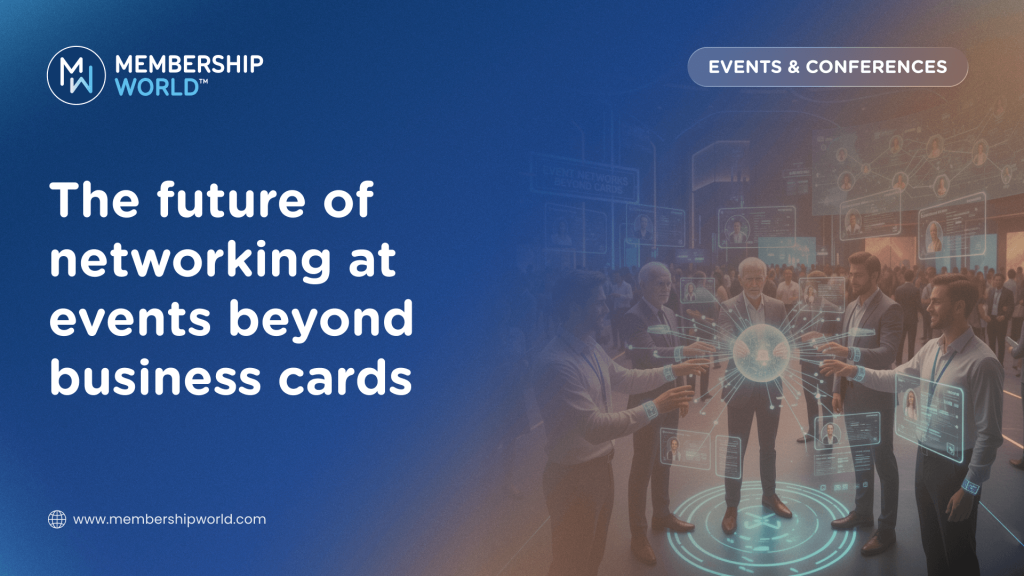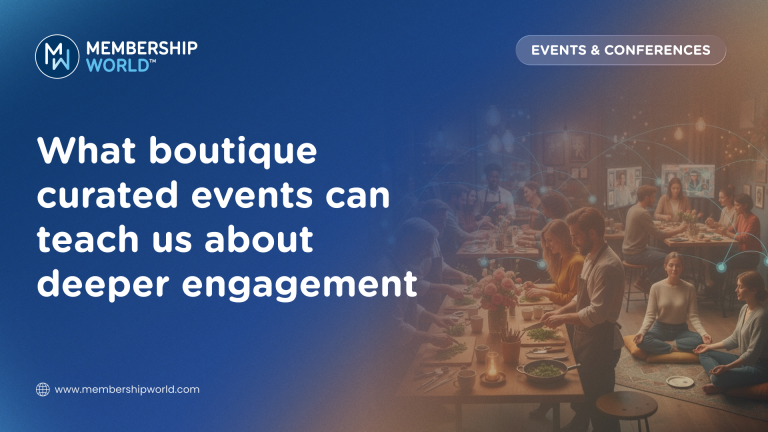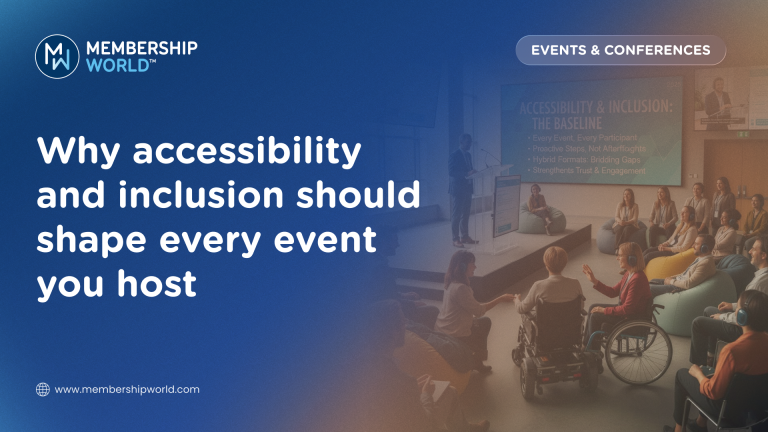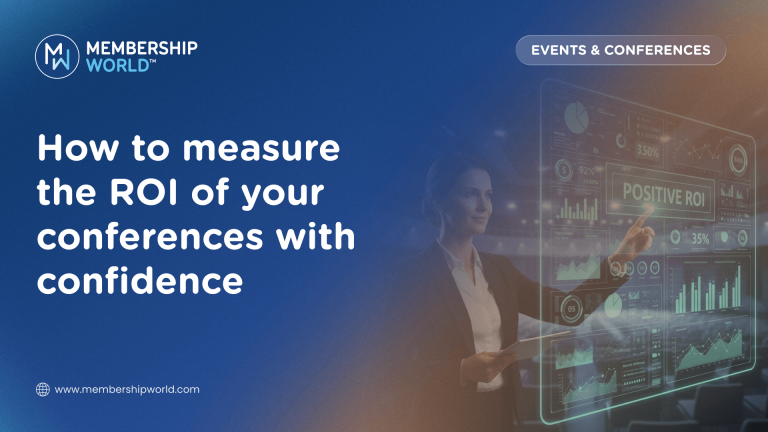
For decades, professional networking at events followed a predictable script. You met someone, exchanged business cards, maybe had a coffee, and hoped the relationship would stick. But the landscape has shifted. Business cards are no longer the centerpiece of connection, and simply “collecting contacts” doesn’t cut it in a digital-first, purpose-driven world.
Today, attendees expect networking to be meaningful, efficient, and seamlessly integrated into their professional lives. The good news is that associations, through their events and conferences, are uniquely positioned to reinvent how networking happens — moving beyond chance encounters to curated, lasting connections that matter.
TLDR:
- Networking is shifting from transactional exchanges to meaningful, long-term connections
- Event technology, AI, and matchmaking tools are changing how people meet and follow up
- Attendees now expect purpose-driven interactions, not just a stack of contacts
- Associations can lead by designing networking experiences that create real value year-round
Why Networking Needs a Rethink
Traditional event networking has its limits:
- Quantity over quality: People walk away with dozens of contacts they’ll never email.
- Missed opportunities: The best potential connections might be in the room, but never meet.
- No follow-through: After the event, those contacts often get lost in a drawer or forgotten in a CRM.
Meanwhile, the modern professional landscape has changed:
- Digital platforms like LinkedIn already cover basic introductions.
- Time is scarce, so attendees want networking that feels purposeful.
- Younger generations value authentic relationships and communities over transactional exchanges.
If events are to remain relevant, networking must evolve beyond the business card.
What Attendees Really Want from Networking
Associations can design better networking experiences if they focus on what attendees truly value:
- Relevance — Meeting people who share specific interests, challenges, or goals.
- Efficiency — Streamlined introductions that don’t waste time.
- Memorability — Experiences that go beyond small talk to create shared moments.
- Follow-through — Easy ways to stay connected after the event.
- Trust — Safe, inclusive spaces where everyone feels welcome to contribute.
These desires are universal across industries, which makes them an anchor point for associations reinventing their events.
New Models of Networking at Events
- AI-Powered Matchmaking
Event platforms now use AI to suggest connections based on member profiles, goals, or past activity. Attendees can enter what they’re looking for — a mentor, a collaborator, a supplier — and get paired with people who match.
The experience is smoother than hoping to bump into the right person. Think of it as “smart networking” where attendees arrive at the event already knowing who they should meet.
- Facilitated Networking Sessions
Instead of leaving introductions to chance, associations can host structured formats like:
- Roundtable discussions on niche topics
- Speed networking with guided questions
- Themed meetups for specific member segments (young professionals, regional chapters, etc.)
Facilitation ensures everyone gets a chance to connect and helps conversations go deeper faster.
- Digital Networking Before and After the Event
Networking doesn’t have to start when the event begins or end when it finishes. Associations can extend value by:
- Opening event apps weeks in advance so attendees can introduce themselves
- Hosting virtual “pre-event coffee chats”
- Creating online groups or forums where conversations continue year-round
This blends the convenience of digital with the depth of face-to-face, making connections more sustainable.
- Experience-Based Networking
Shared experiences spark stronger bonds than small talk. Associations can design opportunities where attendees build relationships through activities such as:
- Collaborative problem-solving workshops
- Wellness activities like group runs or yoga
- Creative icebreakers (escape rooms, design sprints, gamification)
When people work together toward a goal or share an experience, they’re more likely to stay connected.
- Inclusive and Accessible Networking
Associations must design networking with diversity and accessibility in mind. Not everyone is comfortable in noisy receptions or fast-paced speed networking. Offering varied formats — quiet lounges, one-on-one matches, or virtual participation — ensures everyone can connect in ways that feel safe and authentic.
This inclusivity signals that the association values all members, not just extroverts or seasoned professionals.
The Role of Technology
Technology is central to this new networking landscape. Platforms now integrate:
- Smart scheduling so attendees can book meetings on-site
- Interactive profiles that go beyond names and job titles
- Post-event analytics showing members who they met and how to follow up
Emerging tech, like augmented reality (AR) or spatial networking, may soon allow attendees to experience networking in entirely new ways. Imagine pointing your phone at a group and seeing which attendees share your interests or industry in real time.
Associations don’t need to chase every trend, but they should stay aware of how tech can enhance — not replace — human connection.
Building Trust into Networking
No matter how advanced the technology or creative the format, trust remains essential. Attendees need to feel that networking at your event is safe, inclusive, and valuable. Associations can build this trust by:
- Setting clear guidelines for respectful interaction
- Training facilitators to create welcoming spaces
- Providing support for first-time attendees or underrepresented groups
When members know their association cares about the quality and inclusivity of networking, they are more likely to participate and recommend events to others.
Case in Point: Redefining Networking Outcomes
Across the events industry, experiments in rethinking networking are showing results. Some associations have introduced curated matchmaking sessions that pair attendees based on common challenges. Others have launched digital networking lounges where people can connect between sessions on their own schedule.
One successful example is the rise of “connection guarantees”: events promise that attendees will meet at least three new valuable contacts, backed by facilitated introductions. This shifts the focus from chance encounters to intentional value delivery.
From Transactions to Relationships
The future of networking at events isn’t about handing out business cards. It’s about creating relationships that extend beyond the event hall. For associations, this means moving from being event organisers to being connection architects.
By designing experiences that are purposeful, inclusive, and lasting, associations ensure that networking is not just a side benefit of attendance but a core reason members come back year after year.
Final Thoughts
Networking has always been one of the strongest value propositions of association events. But in 2025 and beyond, it must evolve. Members don’t need more contacts — they need better connections.
By blending technology with facilitation, extending networking before and after events, and focusing on inclusivity, associations can transform networking into a signature advantage. They’ll not only meet member expectations but also reinforce their role as trusted conveners of professional communities.
💬 What’s the most memorable networking experience you’ve had at an event — and why did it stand out?



